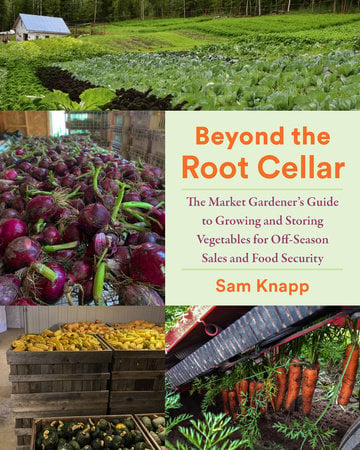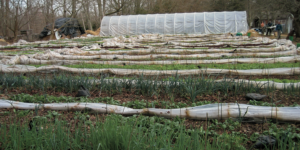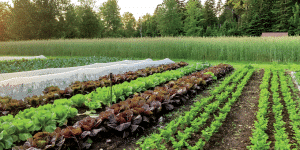Laying Down Cover Crops in 7 Steps
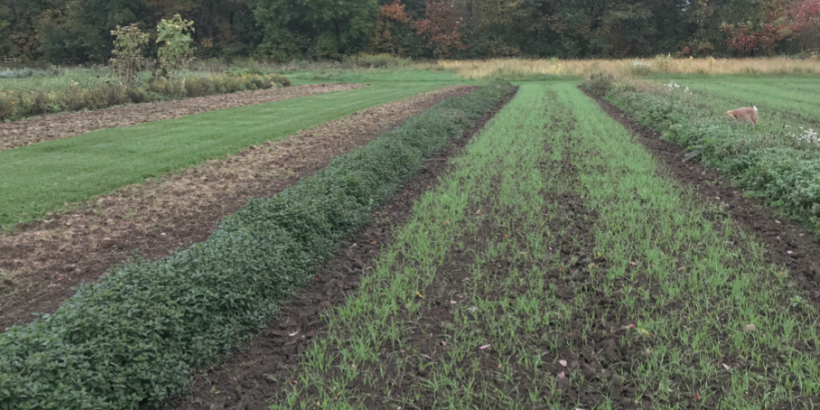
Want to make the most of the slow gardening season? Lay cover crops to improve the health of your soil and plants!
The following is an excerpt from The Celestial Garden by Jane Hawley Stevens. It has been adapted for the web.
Benefits of Cover Crops
Cover cropping is a management practice that benefits the soil, the plants, and the gardener (or farmer). A cover crop can improve soil health, smother weeds, enhance water availability, slow erosion, provide pollinator habitat, and increase biodiversity in your soil.
The basic technique is to plant grasses, legumes, or forbs—such as clovers, vetch, buckwheat, oats, or rye—to cover the soil. Eventually, after cutting it to a manageable height, it can be tilled back into the soil to provide organic matter.
A cover crop may be allowed to grow for as little as four weeks, or sometimes it may be left in place on a garden bed or field for the entire growing season to rejuvenate the soil and add nutrients while improving soil structure. In fact, certified-organic farms are required to take soil acreage out of production every three to five years to improve it in this way.
David has used repeated plantings of cover crops to convert grassland into a productive field where we can grow herbs. The same sequence will work for converting an area of lawn into a home garden.
7 Steps to Laying Cover Crops
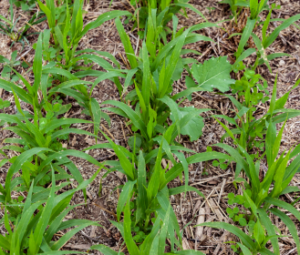
Step 2. When the soil is at the correct moisture level, till the area. This can be done with a shovel, turning the sod under (upside down) if the area is small enough. Another option is to cover the soil with a barrier, such as cardboard, for a year to kill the grass.
Step 3. After tilling, some tough roots of perennial weeds will regrow in the next week or two. After these begin to grow, till the area again. The timing for your retill will depend on weather conditions—plants may not regrow much if the soil is dry.
Step 4. Repeat tilling three more times as you see perennial weeds resprouting. Repeated tillage weakens perennial roots. It will also kill off annual weed seedlings that have germinated, which will reduce future weed pressure.
Step 5. After the fifth round of tilling overall, it is time to sow the cover crop seed. If it is summertime, plant buckwheat (Fagopyrum esculentum). Buckwheat is a fast-growing crop, completing a life cycle from seed to seed in five or six weeks. It also has broad leaves that grow horizontally. Together, these mean that buckwheat quickly establishes a presence and eliminates any light from reaching the soil, putting weeds at a disadvantage.
Virtually nothing else grows in a field of buckwheat. It out-competes everything! The crop can be left to go to seed if you want it to reseed and produce another cover crop immediately afterward, or it can be mowed off. Buckwheat is a tender crop that will crash with even a light frost, and the frosted plants create a kind of blanket over the soil.
Step 6. If you are ready to plant in late summer, with six to eight weeks of warm weather still ahead, you can plant oats (Avena sativa). A bonus with oats as a cover crop is that the unripe seeds, known as the milky stage, can be harvested for use in nerve-support tonics. Oats collected in the milky stage are the best tonic for a marathon nervous-system event, such as grieving the death of a loved one or other long, difficult situations that tax the nervous system.
To ensure good germination, we broadcast oat (and other types of cover crop) seeds on the soil surface, according to the rate suggested on the seed package, and very lightly till it in, about 1/4 inch (6 mm) deep, if possible. Or you can rake the bed by hand; it’s another effective way to increase soil contact with seed, which helps stimulate better germination.
Step 7. When it’s time to plant a cover crop to leave in place for the fall and winter, try a blend of winter rye (Secale cereale) with hairy vetch (Vicia villosa). Do not substitute crown vetch (Securigera varia), which can reseed and become weedy. Other legume cover crops, such as crimson clover (Trifolium incarnatum), red clover (T. pratense), or white clover (T. repens) are also excellent, but the high cost of many kinds of legume seeds makes them less practical.
Considerations With Cover Crops
Take care to not allow cover crops to go to seed; otherwise, they may become competition for your future vegetables, flowers, and herbs. You can choose to let a cover crop make seed as part of your management strategy, but be aware that the self-sown second crop will be less uniform because the seed matures and falls at different rates.
Mow or till it after its life cycle is completed, and then wait a couple weeks before you plant a crop in that spot. Just after tilling, all the available nitrogen in the soil is taken up by soil microbes as they busily feed on decomposing organic matter and their populations expand.
The best phase for planting cover crops are the Full Moon and Waning Gibbous because most cover crops are legumes and grains, and they produce seeds outside the fruit. Wait to till in cover crops during the Last Quarter, if possible, because the sinking water table will help to ensure that the plants are killed off.
Recommended Reads
Weed Suppression: Choosing The Right Cover Crops & Living Mulches
Recent Articles
Extend Your Growing Season with a Cold Frame! Plant earlier in spring AND grow later into fall. Build your own cold frame and enjoy a longer harvest season! Ready to grow more, longer?
Read MoreGrowing year-round is a challenge, but it’s not impossible. Follow these growing tips, and you’ll be well on your way to growing year-round!
Read MoreDoes the cold weather have you dreaming about fresh greens and colorful salad? Tired of waiting for spring to enjoy fresh greens? Grow and harvest sprouts indoors to make those dreams a reality!
Read MoreNo heated greenhouse? No problem! Discover the secrets to thriving winter gardening without breaking the bank.
Read More


